iPad Pro vs Surface Pro 4: Which is best for you?
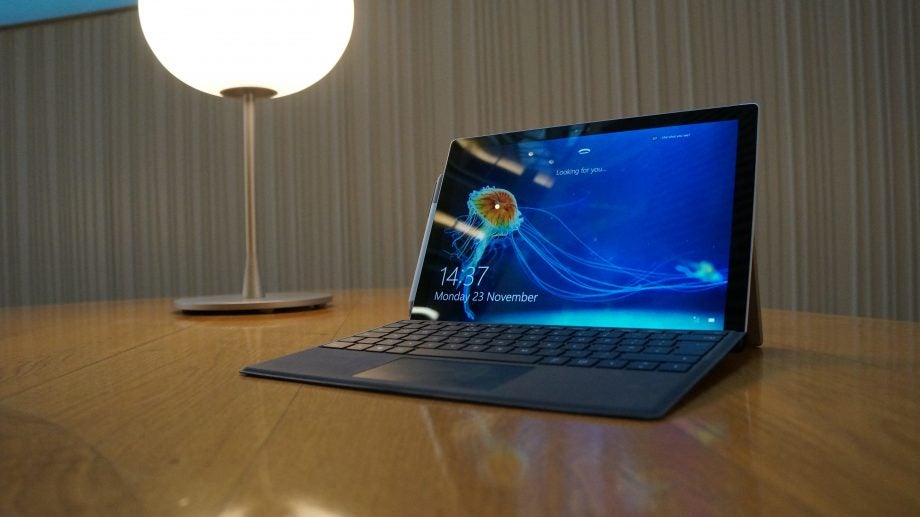
iPad Pro vs Surface Pro 4: Which ‘hybrid’ is the perfect one for you?
iPad Pro or Surface Pro 4? Apple or Microsoft? Windows 10 or iOS 9.2? If you’re in the market for a tablet that doubles as a laptop you’ve got a lot of choice, but the two standout options, for us anyway, are the iPad Pro and Surface Pro 4.
Both have big, beautiful displays with plenty of power and a range of nifty accessories that make them much more than the tablets we were used to just a few years ago.
But, they’re still very different beasts. One runs a fully desktop operating system, while the other runs the same platform as a phone. One has a brilliantly stocked app store with loads of optimised downloads, while the other is somewhat in that area.
There’s a lot of to mull over before you buy, but thankfully we’re here to help.
Related: Everything you need to know about the Microsoft Surface Pro 5
Watch our iPad Pro vs Surface Pro 4 comparison video:
iPad Pro vs Surface Pro 4: Design
iPad Pro: 305.7 x 220.6 x 6.9mm, 713g, 1 x Lightning slot, 3.5mm headphone port
Surface Pro 4: Magnesium casing, 292.1 x 201.4 x 8.4mm, 786g, 1 x USB 3.0, microSD slot, 3.5mm headphone port, Mini DisplayPort
Between them, the iPad Pro and Surface Pro 4 are two of the best-looking hybrid devices on the market – but in very different ways.
The iPad Pro is essentially a super-sized version of the iPad Air 2, which means it’s extremely sleek and simple-looking.
Related: Surface Book vs Surface Pro 4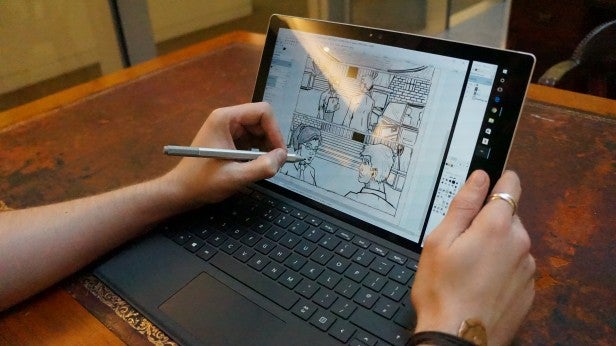
It’s essentially a giant screen sat in a super-slim (6.9mm), round-edged metallic body. It’s much slimmer than the 8.4mm Surface Pro 4, and it’s significantly lighter too.
While Microsoft’s device weighs 786g (you can knock 20g off if you go with the slower Intel Core M variant), the iPad Pro is a surprisingly slight 713g.
We say ‘surprisingly’ because the iPad Pro is a fair amount bigger than the Surface Pro 4 when viewed head-on. It’s more than a centimetre taller (in portrait), and almost two centimetres wider.
The Surface Pro 4 is a denser, chunkier device, in keeping with its outright laptop credentials. It keeps the design approach of the Surface Pro 3, with a distinctively angular look that’s every big as attractive as the iPad in its own way.
We can also praise the Surface Pro 4 for a couple of smart design features that the iPad Pro, in its restrained simplicity, lacks. Microsoft’s latest tablet has a handy kickstand, which can be set at a wide range of angles, and is useful for media play back as well and essential for its acting as a laptop.
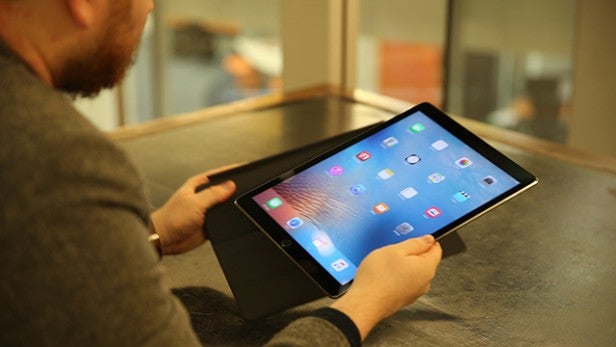
Its magnesium body has a magnetised section along one of its shorted edges, allowing for the convenient storage of the Surface Pen. This has been strengthened over its predecessor, and positioned away from the Pro 4’s key buttons, so it works much better.
It’s a considerable design flaw that the iPad Pro lacks such a provision – regardless of whether the Apple Pencil is optional or not.
On the connectivity front, the Surface Pro 4 wins hands down. Following through on this whole laptop replacement theme, Microsoft’s convertible comes well equipped to slot into your usual laptop set-up.
It features a USB 3.0 port, a microSD card reader, and a MiniDisplay port. This means that you could hook up a mouse, a keyboard, or external storage of some kind.
The iPad Pro, by contrast, comes with a Lightning port, and that’s it.
Buy Now: Pre-order Surface Pro at Microsoft starting from £799
iPad Pro vs Surface Pro 4: Display
iPad Pro: 12.9-inch LCD display, 2732 x 2048 x resolution, 264ppi
Surface Pro 4: 12.3-inch PixelTouch display, 2736 x 1824 resolution, 267ppi
While both of these tablets are bigger than your average 10-inch effort, the iPad Pro is a good half-inch bigger than its rival.
Its 12.9-inch display doesn’t exactly dwarf the 12.3-inch Surface Pro 4, but it’s comfortably larger. They’re similarly sharp though, the iPad Pro at 2,732 x 2,048 and the Surface Pro 4 at 2,736 x 1,824.
Given the difference in size, the pixel density is very similar between these two devices – 267ppi vs 264ppi in the Microsoft tablet’s favour.
The iPad Pro display is notable for including a similar oxide thin-film transistor (TFT) to the 27-inch iMac, delivering uniform brightness across its vast display. It also allows for a variable refresh rate, which helps boost battery life.
In testing, we were very impressed with the sharpness and colour accuracy of both displays, and it’s hard to call an outright winner here.
Related: Apple Pencil – How does it compare?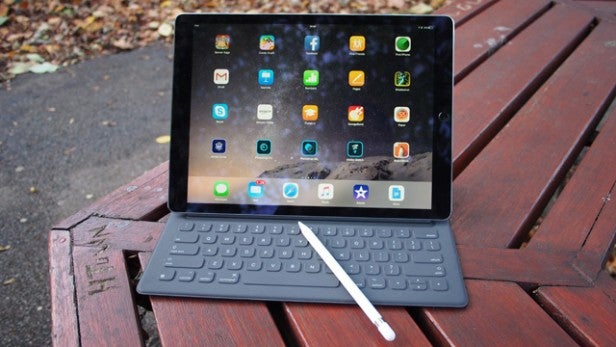
iPad Pro vs Surface Pro 4: Power
iPad Pro: Apple A9X 2.26GHz dual-core processor, 4GB RAM
Surface Pro 4: 6th gen Intel m3 / i5 / i7 CPU, 4GB / 8GB / 16GB RAM
At the iPad Pro’s launch, Apple boasted of its impressive performance. The A9X behind it is the most powerful mobile chip Apple has ever made, and the company claims that it can out-pace 80 percent of portable PCs released in the past year.
That’s impressive, and it certainly outstrips the Surface Pro 4’s entry-level m3 CPU. In fact, our own testing showed the iPad Pro’s A9X CPU to be about equal to the older Surface Pro 3’s i5 configuration, although the Intel Iris GPU found in both the Pro 3 and Pro 4 far outstrips the A9X in graphical terms.
If the iPad Pro gets close to the Surface Pro 4’s mid-range model, however, it doesn’t get anywhere close to Microsoft’s device in full flight. The top 6th generation Intel Core i7 chip is the kind of thing you find powering top-end laptops.
Or, to return to Apple’s own analogy, the other 20 percent.
Related: 6 features that’ll make you want an iPad Pro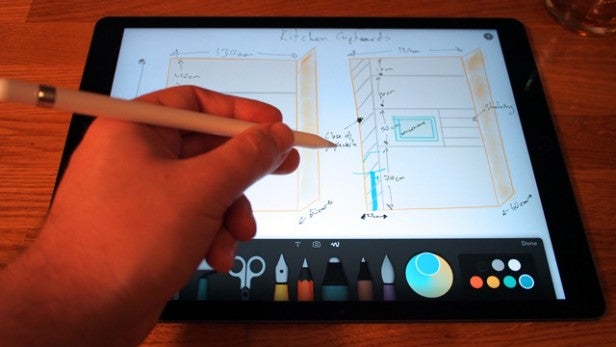
iPad Pro vs Surface Pro 4: Input
iPad Pro: Optional Smart Keyboard, optional Apple Pencil
Surface Pro 4: Optional Type Cover, Surface Pen
Apple has made a lot of the new Apple Pencil stylus, which will work exclusively with the iPad Pro. However, it doesn’t ship with the tablet as standard.
Conversely, every Surface Pro 4 ships with a Surface Pen stylus. As we’ve already discussed, its body is magnetised so that when not in use, the Stylus Pen can be stuck to the edge.
The Apple Pencil, by contrast, has no way to affix itself to the iPad Pro when not in use.
In terms of capabilities, the Apple Pencil can detect when you’re holding it at an angle and adjust your drawing accordingly. Meanwhile the Surface Pen features 1,024 degrees of touch sensitivity – Apple hasn’t provided any exact figures for the iPad Pro, but it’s less – and an eraser function in the opposite end.
You can also swap out the tips of the new Stylus Pen, according to whether you want to do technical drawing, sketching, writing and so on. It also has a button that acts as a shortcut to various functions, including Microsoft’s Cortana personal assistant.
When it comes to utility, the Surface Pen wins out, then. The fact that it comes with every Surface Pro 4 is reflected in its wider usefulness, whereas the Apple Pencil is a specific tool for designers and sketchers, and one with relatively limited app support.
Both of these devices are tablets first and foremost. To that end, neither ships with a keyboard of any kind.
You can purchase a cover that incorporates a physical keyboard though, like Apple’s Smart Keyboard, turning both into a kind-of-notebook. Or connect up a Bluetooth one.
Even here, the Surface Pro 4 is more convincing with its transformation into a laptop. Its own Type Cover incorporates a full touchpad, whereas the iPad Pro continues to rely on direct touch for navigation.
The typing experience is fairly decent in both cases, but we’re giving the larger and more functional Microsoft example the nod here.
Also playing into the Microsoft typing experience’s favour is the fact that you can reposition the angle of the Surface Pro 4 according to your needs, whilst with the iPad Pro you’re stuck at a single fixed angle.
The iPad Pro though is just far more rigid and easier to use when propped on your lap. You know, like a laptop should be.
Buy Now: Pre-order Surface Pro at Microsoft starting from £799
Related: Logitech CREATE keyboard review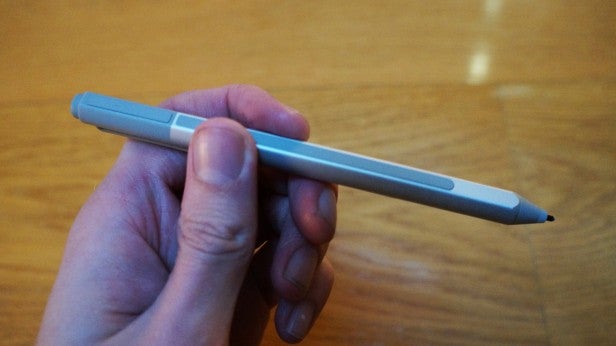
iPad Pro vs Surface Pro 4: Software
iPad Pro: iOS 9
Surface Pro 4: Windows 10 Pro
Here’s the real distinguishing factor between the two devices. The Surface Pro 4 is actually in a completely different league to the iPad Pro, because it runs a full desktop OS in Windows 10.
The iPad Pro, by contrast, merely runs regular iOS 9 – the same OS the iPhone uses. It’s a fine mobile operating system, no doubt, but a mobile OS nonetheless, and one that runs mobile apps rather than full-sized programmes.
This will have a massive impact on the kind of tasks you can use each device for. The Surface Pro 4 is genuinely capable of operating as a laptop, while the iPad Pro just isn’t.
There is the addition of the same handy Split View multitasking feature as made its way to the iPad Air 2 with iOS 9 update, which boosts productivity considerably. But Apple missed a trick here in not leveraging the Pro’s extra power and screen space to enable three or four apps to operate simultaneously.
Of course, the list of touch-friendly tablet apps from third party developers remains much more impressive on iOS than Windows, providing an experience that feels a little more native to the form factor.
iPad Pro vs Surface Pro 4: Storage
iPad Pro: 32GB / 128GB
Surface Pro 4: 128GB / 256GB / 512GB / 1TB
The massive gulf between the intended usage of two devices is again apparent when you consider storage options.
The iPad Pro is still very much a tablet, and one that only comes in 32GB and 128GB guises. Yes, there’s no poxy 16GB model, but then nor is there a 64GB model either.
Where the iPad Pro maxes out at 128GB, the Surface Pro 4 is only getting started. It also offers 256GB, 512GB, and even 1TB options above the bog standard 128GB model.
If you want to store a whole heap of hefty apps and media locally on your hybrid device, the Surface Pro 4 is the clear winner.
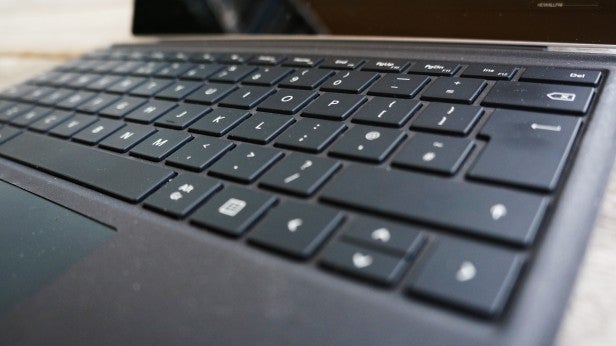
iPad Pro vs Surface Pro 4: Battery
iPad Pro: 10,307 mAh, 10 hours mixed usage
Surface Pro 4: 5,087 mAh, 9 hours mixed usage
Microsoft quotes an hour less of media playback time for its device than Apple, and that just about tallies with our experience. The iPad Pro lasts a little longer than the Surface Pro 4 in general usage.
We should think so too, given that its 10,307 mAh battery is twice the size of the 5,087 mAh Surface Pro 4 equivalent.
When it comes to more demanding tasks like 3D gaming, the Surface Pro 4 drained 18-25 percent per hour, while the iPad Pro came in at around 19 percent. Of course, the Surface Pro 4 is capable of running full Windows games, albeit at less than optimal levels.
All in all, the iPad Pro’s more tightly restricted mobile OS and huge battery makes for a longer lasting experience in between charges. That’s just the price you pay for having a full desktop experience in the form of a tablet.
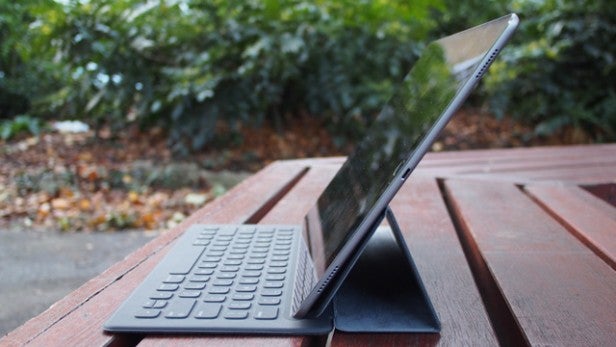
iPad Pro vs Surface Pro 4: Price
iPad Pro: £679 – £899
Surface Pro 4: £750 – £1,799
iPad Pro prices start from £679, while the Surface Pro 4 starts from £750. But it’s not as simple as saying that the iPad Pro is cheaper.
For starters, That £679 will get you the 32GB model of the iPad Pro, while the entry-level Surface Pro 4 has 128GB. To match that amount of storage alone with the iPad, you’ll be looking at £899.
Buy Now: iPad Pro at Amazon.com from $691
Meanwhile, if you spend that on a Surface Pro 4, you’d get bumped up to a more capable Intel Core i5 CPU. Oh, and you’ll get £50 change, too.
You also have to factor in the cost of extras. As discussed, the iPad Pro’s keyboard and stylus are both optional, and they cost £139 and £79 respectively. That’s £218 you need to add on if you truly want to get the best out of your iPad Pro.
Buy Now: Surface Pro 4 at Amazon.com from $694
The Surface Pro 4 comes with a stylus, but you still need to splash out for the Type Cover at £109.99. Still, that’s half the total outlay on extras compared to the iPad Pro.
(apester:566eb33f28f65d382552abb4)
Verdict
The iPad Pro is the most capable tablet Apple has ever produced, as a well as a massive canvas for creative types.
But let’s not kid around here – it’s not even in the same category as the Microsoft Surface Pro 4. Whether you gel with Microsoft’s 2-in-1 vision for Windows 10 or not, there’s no denying that it’s a much more capable and flexible device than the iPad Pro.
The Surface Pro 4 is something that you might consider replacing your laptop or even desktop computer with, under certain circumstances. The iPad Pro is something you might consider replacing your iPad Air 2 with.
Both are fine devices, and Apple’s peerless tablet-optimised app ecosystem and peerless hardware design continues to impress on its own terms. But Apple is pitching it as much more than a mere tablet, and it doesn’t quite match up to those laptop-replacement ambitions.
The Surface Pro 4 is simply the more capable, flexible, and downright useful device of the two.


